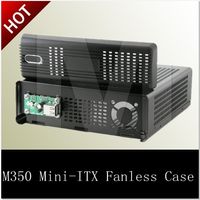Good stuff Mike!
I was looking a similiar '97 gaming series Haswell mITX motherboard. Except didn't need the included wirelessstuff.
I have looked at all of the same series offered by Gigabyte, Asus, IRock, et al. They all make them. The newer 5th generation I-Series is just starting to sell. It's difficult to keep up with the technology. Thinking the current BCM boards I use are also sold by Micron.
Are you looking at a 4-drive or 2-drive NAS? What kind of box?
Last NAS box here used a updated firmware IBM M1015 6 port SATA3 Raid card updated to current LSI firmware. Initially the Asus E350 bios did not recognize the LSI card; a month later an updated BIOS did work. The card is a bit big with many passive heat sinks on it that do get a bit warm.
A neat forum for DIY building your new home server is called "
Serve the Home" dot com. Lots of server obi wans there.
Here splitting it out to two case styles. One tiny mini-pc no frills case (tack on the wall type - DIN style) and one a bit larger with a multimedia home box look to it.
Today just utilize mini-pc box (Aopen Digital Engines) for my XBMC boxes which sit next to the televisions. These are very quiet and have a tiny footprint.
I am assuming you are installing the box next to the television eh?


